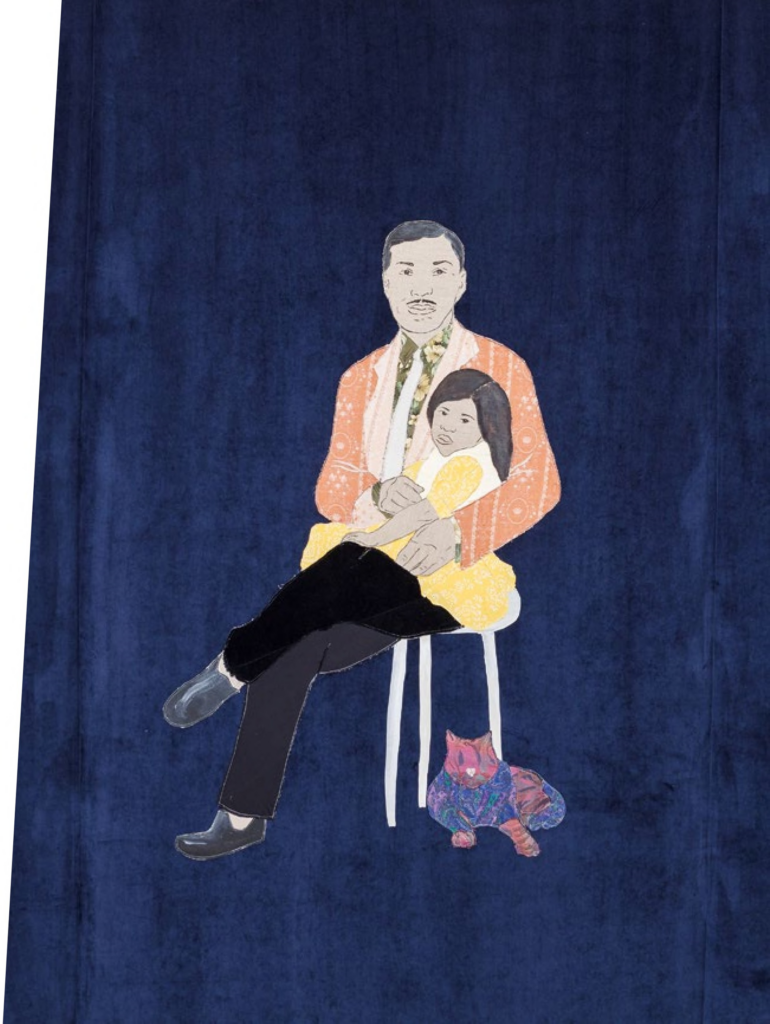MAŁGORZATA MIRGA-TAS
She was born in Zakopane, Poland, and lives and works in the village of Czarna Gora, Poland
Augustyn Gabor z córką Elżbietą / Augustyn Gabor with his dughter Elżbieta, z cyklu / from the series Siukar Manusia (2022), Katarzyna Oraczko z synem Leszkiem / Katarzyna Oraczko with her son Leszek, z cyklu / from the series Siukar Manusia (2022)

Małgorzata Mirga-Tas is an artist, educator, and activist committed to challenging stereotypical representations of Roma people, Europe’s largest ethnic minority. Trained in sculpture at the Academy of Fine Arts in Kraków, Mirga-Tas works in various ways to create resilient and affirming images of Romani culture and identity. In 2011, Mirga-Tas initiated the Jaw Dikh! residency in her hometown for Roma artists. That same year she designed a monument to Romani murdered during the Holocaust near Kraków, a work that was vandalized five years later. The artist’s studio in the Carpathian Mountains is a meeting point for members of her community, who are protagonists in her work as well as active participants in its production. In 2022 she represented Poland at the 59th Venice Biennale as the first Roma artist to be featured in a national pavilion in the history of the biennial.
In Romani Siukar Manusia means “great or wonderful people.” This series shows different first-generation Romani inhabitants of Nowa Huta—an eastern district of Kraków developed after World War II as a large-scale, socialist settlement to house working-class populations. Using her characteristic fabric and patchwork technique as a method of image-making, Mirga-Tas celebrates the lives and livelihoods of the Roma in Nowa Huta, who include steelworkers, cooks, activists, and musicians. Each individual is portrayed in life-sized scale, isolated against a vivid blue background to enhance their presence and, importantly for the artist, also their dignity. The bright patterned fabrics of the figures are taken from used garments. Mirga-Tas sees this clothing as an important marker of identity and an expression of a culture that was long suppressed.
Sourced from personal photographs and historical archives, the portrait images are significant carriers of micro-histories: chronicles of personal achievements and stories of survival. Mirga-Tas’s work avoids hierarchies. Every person has an important story to tell. On view is a portrait of Katarzyna Oraczko, who came to Nowa Huta in the 1950s together with her husband, Andrzej Oraczko, and worked as a cook in a Kraków restaurant. Augustyn Gabor was a respected violinist of Hungarian origins. Through the transformative power of Mirga-Tas’s portrait-making, each protagonist becomes, in the artist’s words: “part of something bigger, a fight against racism.”
